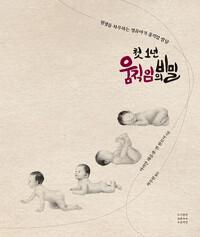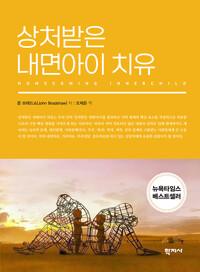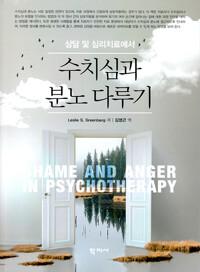책 이미지

책 정보
· 분류 : 국내도서 > 대학교재/전문서적 > 인문계열 > 종교학
· ISBN : 9788978014076
· 쪽수 : 232쪽
· 출판일 : 2014-04-20
목차
Foreword·viii
Abbreviations and Conventions·xiii
Uisang and the Chart of the One-Vehicle of Hwaeom Robert M. Gimello 1
Wishes and Vows as Seen from Buddhist Cults of the Silla People:
Centering on the Samguk yusa Koh Seung-hak 19
Introduction:
Definition of "Won" 願 and Its Meanings in the Historical Scene·19
Ⅰ. The Silla People’s Wishes and Vows: A Textual Analysis of the
Samguk yusa·23
Ⅱ. Introduction of Buddhism and the State-Centered Wishes/Vows
of Royalty·34
Ⅲ. Spread of Buddhist Cults and the Individualistic Wishes/Vows
of the Common People·43
Concluding Remarks: Characteristics of Wishes/Vows of the Silla People·49
Table of Contents
vi The State, Religion, and Thinkers in Korean Buddhism
Uicheon and Monastic Education and Curriculum
in Early Goryeo Richard D. McBride II 61
Ⅰ. Confucian Education and the Examination System
in Northern Song and Goryeo·62
Ⅱ. Buddhist Examinations and Governmental Control
in Tang and Song China·66
Ⅲ. The Buddhist Examination System and Monastic Education
in Early Goryeo·71
Ⅳ. Uicheon’s Development of Monastic Curricula·81
Ⅴ. Educational Material in Uicheon’s Canon of Doctrinal Teachings·90
Bojo Jinul 普照知訥 and the Sudden-Gradual Issue:
Ganhwa Seon and Korean Buddhist Soteriology Robert E. Buswell Jr. 127
Ⅰ. Jinul’s Preferred Soteriology of Moderate Subitism·129
Ⅱ. Problems with Radical Subitism·130
Ⅲ. The Ganhwa Technique·133
Ⅳ. Sudden Awakening/Sudden Cultivation and the Ganhwa Technique·135
"The Mystery of the Century":
Lay Buddhist Monk Villages (Jaegaseung chon)
Near Korea’s Northernmost Border, 1600s –1960s Hwansoo Ilmee Kim 149
Introduction·149
Ⅰ. General History: Korea and the Jurchen·152
Ⅱ. Theories of the Communities’ History and Monastic Identity·153
Ⅲ. Documentation on Lay Monks·162
Ⅳ. Lay Monks within Joseon Buddhism·164
Ⅴ. Scholarship in Context·172
Ⅵ. Conflicted Attitude of Korean Buddhists·176
Conclusion·180
Table of Contents vii
Korean Buddhism’s Efforts to Establish Itself as a Modern Religion,
and Its Political Subjugation to Authorities in the Process Kim Yong-tae 195
Foreword·195
Ⅰ. The "Civilized Enlightenment" Policy of [Korean] Modern Buddhism,
and Its "Reform" Discourses·197
Ⅱ. Problems of the "Buddhist Temple Act," and Korean Buddhism’s
Transformation into State Buddhism·208
Closing Remarks·219
Contributors·233
저자소개
책속에서
Foreword
Foreword ix
and sa?gha in the history of Korean Buddhism, whereas some examine the
issues of devotion and relation between the state and religion. All the papers
presented at the conference provided a valuable opportunity to reflect upon
the universality and distinctiveness of Korean Buddhism from new perspectives.
In the first paper titled “Uisang and the Chart of the One-Vehicle of
Hwaeom,” Robert Gimello elucidates significance of the Beopgye-do in the
development of Huayan/Hwaeom tradition through a meticulous analysis of
the Hwaeom ilseung beopgye-do composed by the Silla monk Uisang. This
seminal text is, as Gimello shows, essential for understanding the very beginning
of the Korean Hwaeom tradition it represents. While previous scholarship
primarily focused on Zhiyan’s writings, Gimello seeks to revise this
view by paying focused attention to Uisang’s Beopgye-do. Acknowledging
Uisang’s indebtedness to Vasubandhu and the Dilun school, Gimello proposes
considering the shape and content of the Ilseung beopgye-do represented in
the form of a helical poem to be “an objective correlative, a verbal and graphic
illustration of the six marks and their meaning.”
In “Wishes and Vows as Seen from Buddhist Cults of the Silla People:
Centering on the Samguk yusa,” Koh Seung-hak sheds a new light on Buddhist
cults of the Silla by examining “won” or “wollyeok” that could be rendered
as wishes and vows in English. Examining references to the term preserved
in the Samguk yusa, a primary source for understanding ancient Korean
Buddhism, Koh demonstrates how the notion of wollyeok, which plays a
pivotal role in the bodhisattva practice of Mah?y?na Buddhism, developed on
Korean soil. Koh’s essay examines the Silla people’s Buddhist cults and the
relationship between Buddhism and the ancient state after the transmission of
Buddhism in depth. Koh’s analysis reveals two aspects of the Silla people’s
won. On the one hand, it represents the faith in taryeok or other-power, which
aimed for achieving religious wishes of individuals and solving pressing issues
that the state faced through prayer to buddhas and bodhisattvas. On the
other hand, the Silla people’s cultic practices, promoted by the Buddhist elite,
x The State, Religion, and Thinkers in Korean Buddhism
simultaneously embody the Mah?y?na ideals of non-duality and dedication
of merit to others. That the cults devoted to diverse buddhas and bodhisattvas
coexisted without conflicts represents synthetic character of Silla Buddhism.
Richard D. McBride II’s “Uicheon and Monastic Education and Curriculum
in Early Goryeo” is a welcome addition to studies of Goryeo Buddhism.
Although past scholarship on monastic examinations during the Goryeo has
illuminated the relationship between the state and sa?gha, monastic education
and curriculum, issues closely related to monastic examination, have not
received scholarly attention they deserve. By analyzing Uicheon’s several
writings on monastic education, McBride brings into sharp focus the monastic
education and curricula at the end of the eleventh century. By comparing
Goryeo’s system of monastic examinations with those of Tang-Song China
meticulously, McBride finds distinctive character of Goryeo’s monastic examinations
and illustrates in what ways it is different from contemporary Chinese
counterpart.
In “Bojo Jinul 普照知訥 and the Sudden-Gradual Issue: Ganhwa Seon
and Korean Buddhist Soteriology,” Robert E. Buswell Jr. investigates issues
of awakening and practice in ganhwa Seon, a meditation technique
promoted by Jinul, the founder of Suseonsa, who left lasting influence on
Korean Buddhism. Jinul was the first Korean monk who wrote about the ganhwa
technique and advocated its use. Buswell’s analysis of Jinul’s writings
indicates that Jinul’s approach to ganhwa Seon differs from what becomes
normative within the Linji tradition. Buswell further shows that Jinul sought
for accommodation between his preferred soteriological approach of sudden
awakening/gradual cultivation and the ganhwa Seon practice and that Jinul
considered ganhwa Seon as a “short-cut” to enlightenment, which transcends
all the other soteriological approaches. Buswell’s paper not only improves our
understanding of Jinul’s approach to the sudden awakening/gradual cultivation,
but also sheds a new light on the sudden/ gradual debate that continues
to date.
Hwansoo Ilmee Kim, in “ ‘The Mystery of the Century’: Lay Buddhist
Foreword xi
Monk Villages (Jaegaseung chon) Near Korea’s Northernmost Border, 1600s?
1960s,” invites readers to turn to the villages of lay monks in Hamgyeongdo
near North Korea’s northernmost border, a rare instance of married monks
forming communities for a long time in the history of East Asian Buddhism.
The men of the villages, called “lay monks,” had wives and children and
made a living in the border region between Korea and China. These communities
and their life styles lasted until the Japanese colonial period. Kim traces
the origins and history of these communities within the context of Joseon
Buddhism. Not only does this paper advance our understanding of Buddhism
placed under the Neo-Confucian hegemony of the Joseon dynasty, but also
it helps us better understand the conflict between the celibate and married
monks in the modern times.
The present volume concludes with a paper by Kim Yong-tae, “Korean
Buddhism’s Efforts to Establish Itself as a Modern Religion, and Its Political
Subjugation to Authorities in the Process.” Kim examines Korean Buddhism’s
efforts to establish itself as a modern religion and limitations caused
by its political subjugation to colonial authorities in the process. Pursuing a
state of civilized enlightenment, modern Buddhist thinkers proposed diverse
reformist measures in order to establish Buddhism as a modern religion without
any restraints. Due to the lack of independent, mature understanding of
the modernity, however, these thinkers merely sought for civilized enlightenment
to protect the religion they upheld and to secure Buddhism’s place in a
rapidly changing modern society. The “Buddhist Temple Act,” implemented
during the Japanese colonial period, allowed the Governor General Office to
directly manage and control the Joseon Buddhist circle. Although some Korean
reformists called for abolishment of the Buddhist Temple Act and separation
between the state and religion, Buddhism eventually became another form of
state religion for the colonial government when the “Wartime Mobilization”
was established during the World War II. Kim deftly demonstrates how the
colonial realities emasculated Buddhist reformers who dreamt of Buddhism’s
transformation into a modern religion. The burden of the painful, colonial
xii The State, Religion, and Thinkers in Korean Buddhism
past fell on Korean Buddhism even after Korea’s independence from Japan in
1945.
Together the six papers in this volume represent the mission of the Research
Project for Humanities Korea: to explore and define glocality of Korean
Buddhism.
Sincere gratitude goes to the contributors for their invaluable
essays and Professor Robert E. Buswell Jr. in particular for presiding over
the international conference back in 2012. We extend our heartfelt gratitude
to HK Research Professors Kang Ho-sun and Koh Seung-hak, and Mr. Rhee
Deok-yeol for their editorial assistance. We are similarly grateful to the Anguk
Zen Center for providing much help with English publication.
Kim Jong-wook
Director
Research Project for Humanities Korea, Dongguk University
.






































